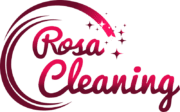Purpose
This guidance provides recommendations on the cleaning and disinfection of households where persons under investigation (PUI) or those with confirmed COVID-19 reside or may be in self- isolation. It is aimed at limiting the survival of the virus in the environments. These recommendations will be updated if additional information becomes available.
These guidelines are focused on household settings and are meant for the general public.
- Cleaning refers to the removal of germs, dirt, and impurities from surfaces. It does not kill germs, but by removing them, it lowers their numbers and the risk of spreading infection.
- Disinfecting refers to using chemicals, for example, EPA-registered disinfectants, to kill germs on surfaces. This process does not necessarily clean dirty surfaces or remove germs, but by killing germs on a surface after cleaning, it can further lower the risk of spreading infection.
General recommendations for routine cleaning and disinfection of households
- Community members can practice routine cleaning of frequently touched surfaces (for example: tables, doorknobs, light switches, handles, desks, toilets, faucets, sinks, and electronics (see below for special electronics cleaning and disinfection instructions)) with household cleaners and EPA-registered disinfectantsexternal icon that are appropriate for the surface, following label instructions. Labels contain instructions for safe and effective use of the cleaning product including precautions you should take when applying the product, such as wearing gloves and making sure you have good ventilation during use of the product.
- For electronics follow the manufacturer’s instructions for all cleaning and disinfection products. Consider use of wipeable covers for electronics. If no manufacturer guidance is available, consider the use of alcohol-based wipes or spray containing at least 70% alcohol to disinfect touch screens. Dry surfaces thoroughly to avoid pooling of liquids.
General recommendations for cleaning and disinfection of households with people isolated in home care (e.g. suspected/confirmed to have COVID-19)
- Household members should educate themselves about COVID-19 symptoms and preventing the spread of COVID-19 in homes.
- Clean and disinfect high-touch surfaces daily in household common areas (e.g. tables, hard-backed chairs, doorknobs, light switches, phones, tablets, touch screens, remote controls, keyboards, handles, desks, toilets, sinks)
- In the bedroom/bathroom dedicated for an ill person: consider reducing cleaning frequency to as-needed (e.g., soiled items and surfaces) to avoid unnecessary contact with the ill person.
- As much as possible, an ill person should stay in a specific room and away from other people in their home, following home care guidance.
- The caregiver can provide personal cleaning supplies for an ill person’s room and bathroom, unless the room is occupied by child or another person for whom such supplies would not be appropriate. These supplies include tissues, paper towels, cleaners and EPA-registered disinfectants (see examplesexternal icon).
- If a separate bathroom is not available, the bathroom should be cleaned and disinfected after each use by an ill person. If this is not possible, the caregiver should wait as long as practical after use by an ill person to clean and disinfect the high-touch surfaces.
- Household members should follow home care guidance when interacting with persons with suspected/confirmed COVID-19 and their isolation rooms/bathrooms.
